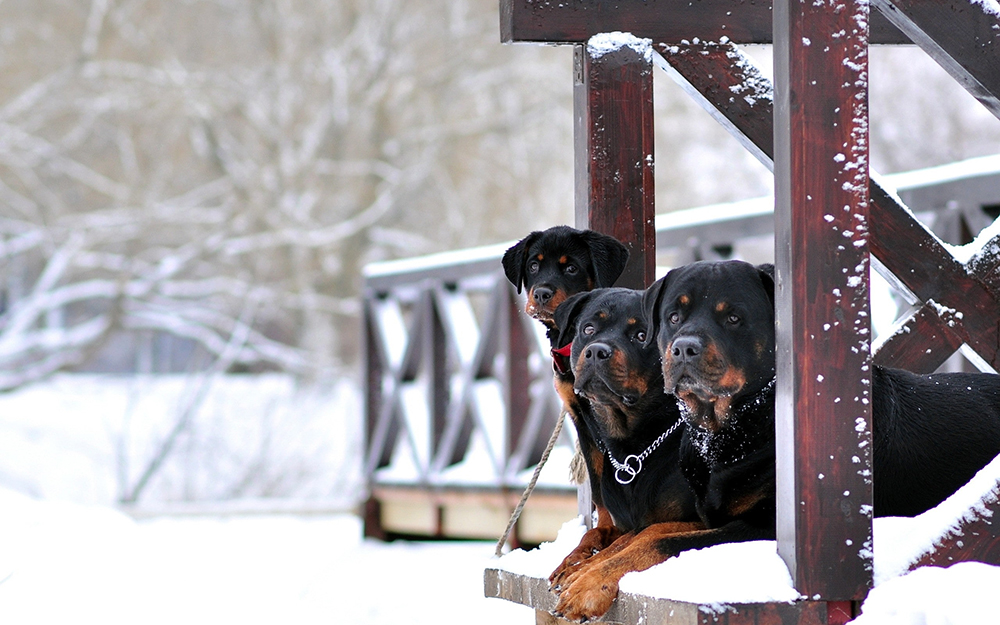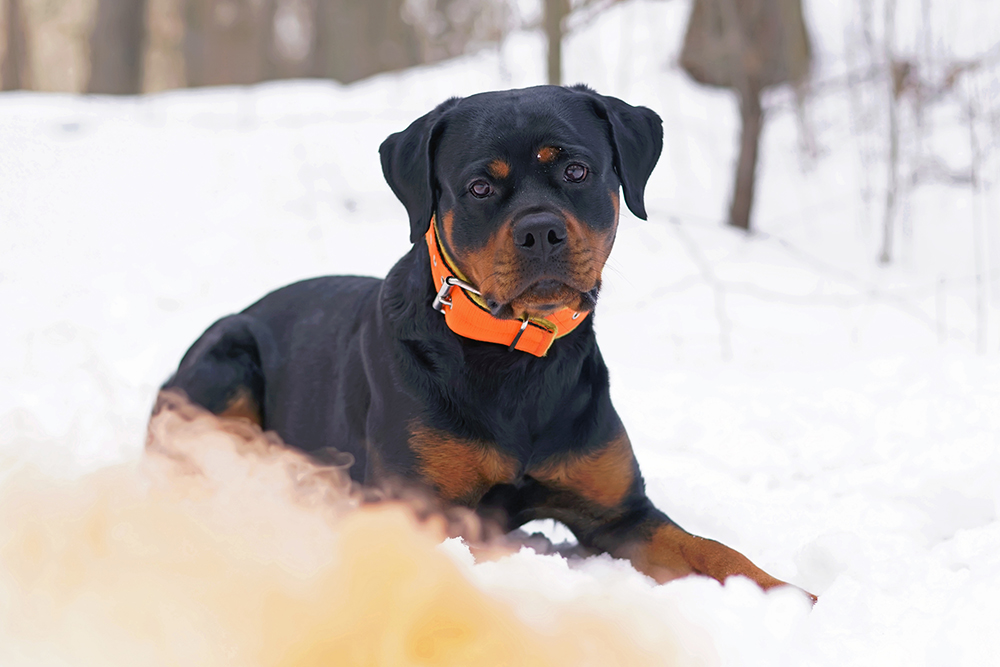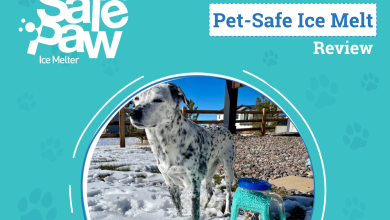
Dogs are like any animal in that they have varying degrees of tolerance for weather and ambient conditions. Many factors play a role, from genetics to health to body size. But how does the Rottweiler specifically handle cold weather?
Rottweilers can handle the cold with limitations. The evident fact is that this breed has short hair and can’t benefit from the insulating properties as they could if it were longer. That reduces the dog’s ability to tolerate extreme conditions. However, that doesn’t mean that they can’t ever go out into cold weather. Let’s learn more about this.


A Dog’s Upbringing and Tolerance for Cold Weather
As we said, the Rottweiler originated in Germany, which lies between 47°N and 55°N. The former is on a parallel with Duluth, MN, and the latter with the Alaskan Panhandle. The country has a temperate/ continental climate depending on the region. Yet, the average winter temperature is only about 39℉ because of the modulating influences of the North Sea and Southern Alps. Therefore, the Rottweiler may be better adapted to the cold than some other breeds.
Of course, animals that live outside year-round are more tolerant than pets kept indoors. Their bodies adapt to the environment by growing thicker coats to bolster their chances of survival and reproductive success. The takeaway on this point is that tolerance is somewhat adaptable. However, that does not mean you should ever allow your Rottie to stay outside in below-freezing temperatures for long periods.


How Body Size Plays a Role
Small dogs are more likely to get cold than large dogs like the Rottweiler. This breed has size in its favor. Rottweilers can range from 80–135 pounds. The reason for this rests with surface area. A tiny Chihuahua has a proportionally larger area from which body heat can dissipate than a Rottie.
Scientists have noted that warm-blooded animals like dogs are often bigger in higher latitudes. Bergmann’s rule describes this observation. The adaptation allows organisms to conserve heat and the resources necessary to keep animals warm. The takeaway from this information is that the Rottweiler is more capable of handling cold temperatures because of the ratio of their surface area to size or volume.
How Genetics Affect Your Rottweiler’s Cold Tolerance
Genetics is always a wild card, adding new twists and nuances to every question. The Rottweiler is no exception. We’ve discussed this dog’s short coat. But while the breed has an undercoat, its thickness is variable, depending on the climate. That harkens back to our explanation of adapting tolerance. The official breed standard accounts for these differences.
The other consideration is the dog’s coat length. Five recessive variants of one gene called FGF5 (fibroblast growth factor-5) exist in the canine genome that may cause a Rottweiler to have long hair. Puppies receive one copy or allele of each gene from their mothers and fathers. If each pup gets two alleles of the short-haired variant, that’s what their coat will present visually.
Things get more complex if a puppy receives one short-haired variant from one parent and the long-haired allele from the other. Since the trait is recessive, the dog will still have short hair. A pup would only have long hair if they received that allele from both parents.
The wild card is with puppies having one short-haired variant and one long-haired allele. These pups are carriers of the trait. If this dog mates with another carrier, 25% of their offspring could be long-haired Rottweilers. These pups may have a greater cold tolerance because of their long coats. You may wonder why you don’t see more long-haired Rotties. The reason is simple: This trait is considered a cause for disqualification in the show ring. Serious breeders wouldn’t encourage it. Luckily, a DNA test can help them identify carriers.


The Veterinary Point of View
Let’s consider this question from a veterinary perspective. Scientists have developed the Tufts Animal Condition and Care (TACC) score to determine a dog’s risk of neglect. It assesses the animal’s risk based on environmental factors and the dog’s condition, giving it a numerical value. Scores can range from ≤1 to ≥5. The higher the figure, the greater the chances of inhuman treatment.
The TACC score adds points if the dog is a toy breed or in wet conditions. It also considers the dog’s coat, acclimation to the elements, and the availability of shelter. It further evaluates the risk based on whether the animal is a puppy or a senior. The dog’s size also influences the score. The system may classify the Rottweiler as a large or giant dog based on their weight and age.
Let’s look at the tallies for Rottweilers kept in various conditions, assuming an adult pup is categorized as large/giant.
| Score | Conditions | Weather Safety Scale |
| 1 | Temperatures around 50℉; available shelter and bedding | Risk not present |
| 3 | Temperatures around 30℉; no available shelter or bedding | Unsafe |
| 5 | Temperatures around 10℉; no available shelter or bedding; not acclimated to cold temperatures; precipitation | Life-threatening |
These scores also consider the state of the situation and condition of the animal. The assessment takes into account the dog’s coat and whether they are of a northern breed. However, the points regarding temperature, availability of shelter, and weather are well-taken. They clearly point to a cold environment as unhealthy and possibly unsafe even for a large dog like a Rottweiler.


Keeping Your Rottweiler Safe
The temperature and weather aren’t the only factors when considering the effects of the cold on your pet. The wind chill is another valid point, particularly with a dog without a thick, dense undercoat like the Rottweiler. An animal may feel cold quicker in wet conditions or if it’s raining or snowing.
Puppies and senior pets can’t regulate their internal temperature as readily as healthy adults. Likewise, you should restrict a sick dog’s time outdoors in inclement weather because of their weakened state. While some may think clothing silly, they are sometimes practical for short-haired dogs to handle cold weather. So, your pooch may not like booties, but they’ll protect their paws from frostbite.


Final Thoughts
Rottweilers have a tough-guy reputation because of their use in law enforcement and the military. They are indeed strong animals and capable of the demands of these roles. However, it behooves you as a pet owner to understand their limitations of cold tolerance. Their size gives them a slight advantage, but challenging situations can be unsafe for a Rottie or any dog to handle.
Featured Image Credit: Sr Bainsla, Shutterstock



